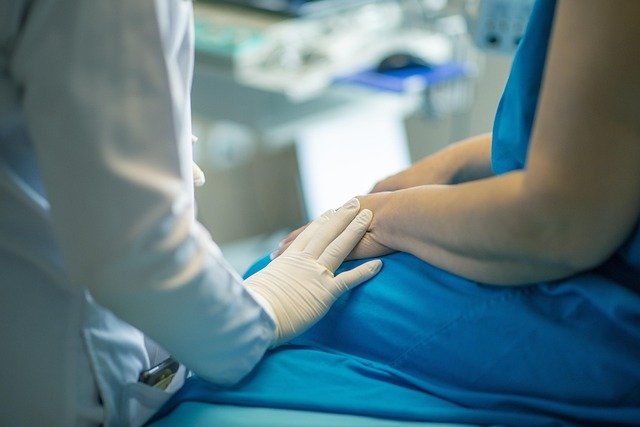Belly Fat Reduction — What you should know
Belly fat reduction remains one of the most sought-after cosmetic improvements, with millions of Americans exploring both surgical and non-surgical options to achieve their desired abdominal contour. Understanding the various approaches available can help you make informed decisions about which method aligns best with your goals, lifestyle, and budget.

What Are Your Belly Fat Removal Surgery Options?
Surgical procedures offer the most dramatic and immediate results for abdominal fat removal. Liposuction stands as the most popular option, using small incisions and suction techniques to permanently remove fat cells from targeted areas. This procedure works best for individuals with good skin elasticity and localized fat deposits that resist diet and exercise.
Abdominoplasty, commonly known as a tummy tuck, addresses both excess fat and loose skin while tightening underlying abdominal muscles. This comprehensive approach makes it ideal for individuals who have experienced significant weight loss or pregnancy-related changes. The procedure involves a longer incision across the lower abdomen and requires more extensive recovery time than liposuction alone.
Mini tummy tucks offer a less invasive alternative, focusing on the area below the navel with smaller incisions and shorter recovery periods. This option suits patients with minimal skin laxity and fat accumulation primarily in the lower abdominal region.
How Does Belly Fat Removal Without Surgery Work?
Non-surgical alternatives have gained significant popularity due to their minimal downtime and reduced risks. CoolSculpting, an FDA-approved cryolipolysis treatment, freezes fat cells to destroy them naturally over several months. Multiple sessions typically achieve optimal results, with each treatment lasting approximately one hour per targeted area.
Radiofrequency treatments like Vanquish and truSculpt use controlled heat to eliminate fat cells while simultaneously tightening skin. These procedures require no incisions and allow patients to return to normal activities immediately following treatment.
High-intensity focused ultrasound (HIFU) represents another non-invasive option, using targeted ultrasound energy to break down fat cells. Similar to other non-surgical methods, results develop gradually over several months as the body naturally processes destroyed fat cells.
Understanding Liposuction and Tummy Tuck Differences
The choice between liposuction and tummy tuck procedures depends largely on individual anatomy and desired outcomes. Liposuction exclusively removes fat and works best for patients with good skin tone who simply want to eliminate stubborn fat deposits. The procedure typically takes one to three hours and involves minimal scarring.
Tummy tucks address multiple concerns simultaneously, including excess skin removal, muscle tightening, and fat reduction. This comprehensive approach requires longer surgery times, typically three to five hours, and results in more significant scarring along the lower abdomen.
Recovery timelines differ substantially between these procedures. Liposuction patients often return to work within a few days and resume exercise within two to three weeks. Tummy tuck recovery requires two to four weeks off work and six to eight weeks before returning to full physical activity.
Which Abdominal Fat Removal Method Suits You Best?
Selecting the appropriate abdominal fat removal method requires careful consideration of multiple factors. Age, skin elasticity, overall health, and realistic expectations all influence the best treatment choice. Younger patients with good skin tone may achieve excellent results with non-surgical options or liposuction alone.
Individuals with significant skin laxity, separated abdominal muscles, or substantial fat deposits typically benefit most from surgical intervention. A qualified plastic surgeon can assess your specific anatomy and recommend the most appropriate approach during a comprehensive consultation.
Your lifestyle and available downtime also impact treatment selection. Non-surgical options accommodate busy schedules with minimal disruption, while surgical procedures require dedicated recovery periods but deliver more dramatic, immediate results.
| Procedure Type | Provider Example | Average Cost Range |
|---|---|---|
| Liposuction | American Society of Plastic Surgeons Members | $3,500 - $8,000 |
| Tummy Tuck | Board-Certified Plastic Surgeons | $8,000 - $15,000 |
| CoolSculpting | Local Med Spas/Dermatology Clinics | $2,000 - $4,000 |
| Radiofrequency Treatments | Aesthetic Treatment Centers | $1,500 - $3,500 |
Prices, rates, or cost estimates mentioned in this article are based on the latest available information but may change over time. Independent research is advised before making financial decisions.
The cost of belly fat reduction varies significantly based on geographic location, provider experience, and treatment complexity. Geographic regions with higher costs of living typically command premium pricing, while rural areas may offer more affordable options. Multiple treatment sessions for non-surgical procedures can accumulate substantial costs over time, sometimes approaching surgical procedure pricing.
Insurance rarely covers cosmetic fat removal procedures unless deemed medically necessary. Many providers offer financing options to make treatments more accessible, including monthly payment plans and medical credit programs with promotional interest rates.
Making Your Decision
Successful belly fat reduction requires realistic expectations and commitment to maintaining results through healthy lifestyle choices. Both surgical and non-surgical options can deliver significant improvements when performed by qualified professionals using appropriate techniques for individual patient needs.
Research potential providers thoroughly, seeking board-certified plastic surgeons for surgical procedures and experienced practitioners for non-surgical treatments. Multiple consultations can provide valuable perspectives and help ensure you select the most appropriate approach for achieving your aesthetic goals safely and effectively.
This article is for informational purposes only and should not be considered medical advice. Please consult a qualified healthcare professional for personalized guidance and treatment.




